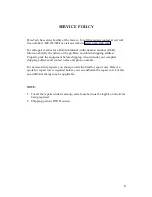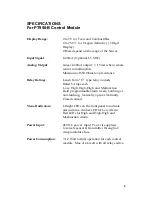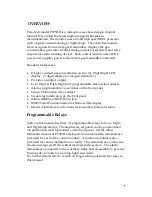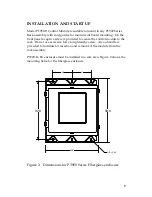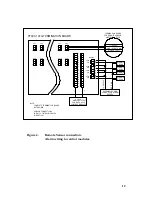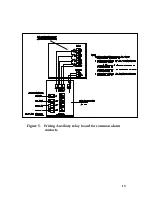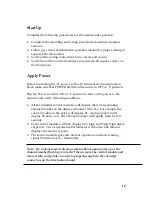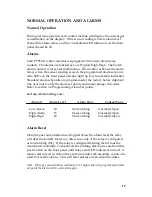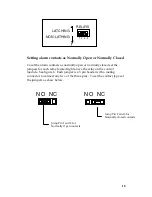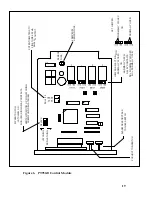
17
Programming Alarm Levels
1.
Move the toggle switch on the front panel to BYPASS position.
2.
Press and hold the pushbutton switch (above the toggle switch) until
the Low alarm LED starts flashing. Release the switch.
3.
While the LED is flashing the display will show the current alarm
level. To change the level press and hold the pushbutton switch until
the display reads the desired alarm setting. The alarm level can be
adjusted between 0 and the full scale of the sensor. For example, for
H2S or LEL the alarm level can be set between 0 and 99. If the desired
alarm level is below current settings press and hold the switch. The
displayed alarm level will start over from 0 after 99.
4.
Release the switch when alarm level set.
5.
About five (5) seconds after the switch has been released the Low
alarm LED will be turned off. Low alarm level is set. Now High alarm
LED starts flashing and the display will show the High alarm level.
The monitor is ready for High alarm level. Repeat steps 3 and 4 to set
High and High-High alarm levels.
6.
After setting High-High alarm level the monitor will return to normal
operation.
Setting Alarm as Latching or Non-Latching
The alarms can be set as latching or Non-Latching by setting the Dip-
Switch located on upper left corner of the control module. See figure 6.
The dip-switch is labeled as
Relays
with arrow indicating the switch
selection for latching or non-latching. Position 1 of the Dip-switch is for
Low alarm , position 2 is for High alarm and position 3 for High-High
alarm. Position 4 is not used for standard application and is reserved for
custom application or future use.
To set the alarm as latching move the dip-switch up or move the dip
switch down for non-latching alarms.
The dip-switch positions in the diagram below shows Low and High
alarm configured as non-latching and High-High alarm set as latching

